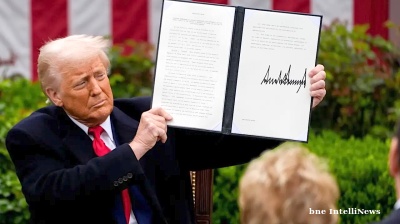Croatia’s consolidated general government deficit fell to HRK2.78bn (€373mn) or 0.8% of GDP in 2016 from HRK11.4bn or 3.4% of GDP in 2015, according to data published on April 24 by the statistics office based on figures from its Excessive Deficit Procedure (EDP) report.
Croatia, which entered the European Commission’s EDP in January 2014, has been trying to reduce its deficit over the past two years. The EU’s Maastricht criteria required Croatia to cut the government deficit to below 3% of GDP. However, there is no immediate prospect of exiting the EDP as the country’s public debt is still well above the 60% of GDP threshold set by the Commission.
The director of Croatia’s Central Bureau of Statistics, Marko Kristof, told a press conference on April 25 that the deficit was at the lowest level since 2002, when the current methodology was first used, Vecernji List reported. Kristof attributed the fall partly to the country’s strong economic growth in 2016 and in particular the excellent tourist season. According to an initial estimate from the statistics office, Croatia’s GDP growth accelerated to 2.9% in 2016, up from 1.6% in 2015.
Meanwhile, the EDP report from the statistics office said that “The biggest impact on the improvement of the deficit in 2016 was the increase in tax revenues.” It pointed to sharp increases in taxes on production and imports, income and wealth taxes and capital taxes.
The deficit is set to rise slightly in 2017, when Zagreb is targeting a general government deficit of 1.6% of GDP in 2017, according to the 2017 budget. The GDP growth target for 2017 stands at 3.2%.
The Croatian government aims to reduce public debt to 81.5% of GDP in 2017. Public debt is targeted to further decline to 78.6% of GDP in 2018 and 75.3% in 2019.
Despite the recent acceleration in growth and reduction of the deficit, in February the European Commission announced that it had kept Croatia among the EU members experiencing excessive imbalances due to the Adriatic country’s vulnerabilities linked to high levels of public, private and external debt, both largely denominated in foreign currency, in a context of low potential growth.
Data

Romania’s inflation rises to 5.66% in June ahead of anticipated price pressures
Electricity market liberalisation and a VAT hike in August are expected to put upward pressure on prices.

Tipping Point: when populations peak – Statista
As July 11 marks World Population Day, celebrating the approximate date that the world's population reached 5bn in 1987, we're taking a closer at one of the population trends that will affect many countries sooner or later in the 21st Century.
_1752212786.png)
Czech inflation confirmed at 2.9% y/y in June
Consumer price growth (inflation) in Czechia reached its highest level this year after the country’s statisticians confirmed inflation increased by 2.9% year on year, and by 0.3% month on month.
_1752208328.jpg)




_1752211677.png)